Herps of VT
1/99
There's no tags or description
Looks like no tags are added yet.
Name | Mastery | Learn | Test | Matching | Spaced |
|---|
No study sessions yet.
100 Terms
Bufonidae, Anaxyrus americanus
American Toad
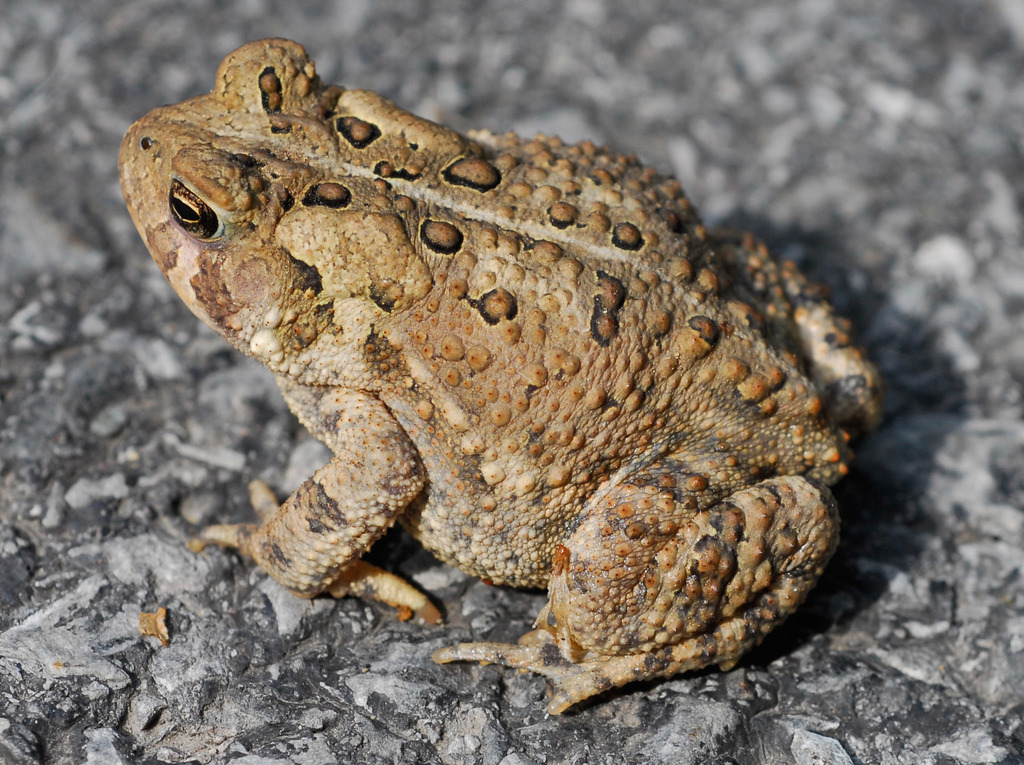
American Toad habitat
Overwinter underground, moist hiding places, breed in shallow water, widespread throughout VT (S5)
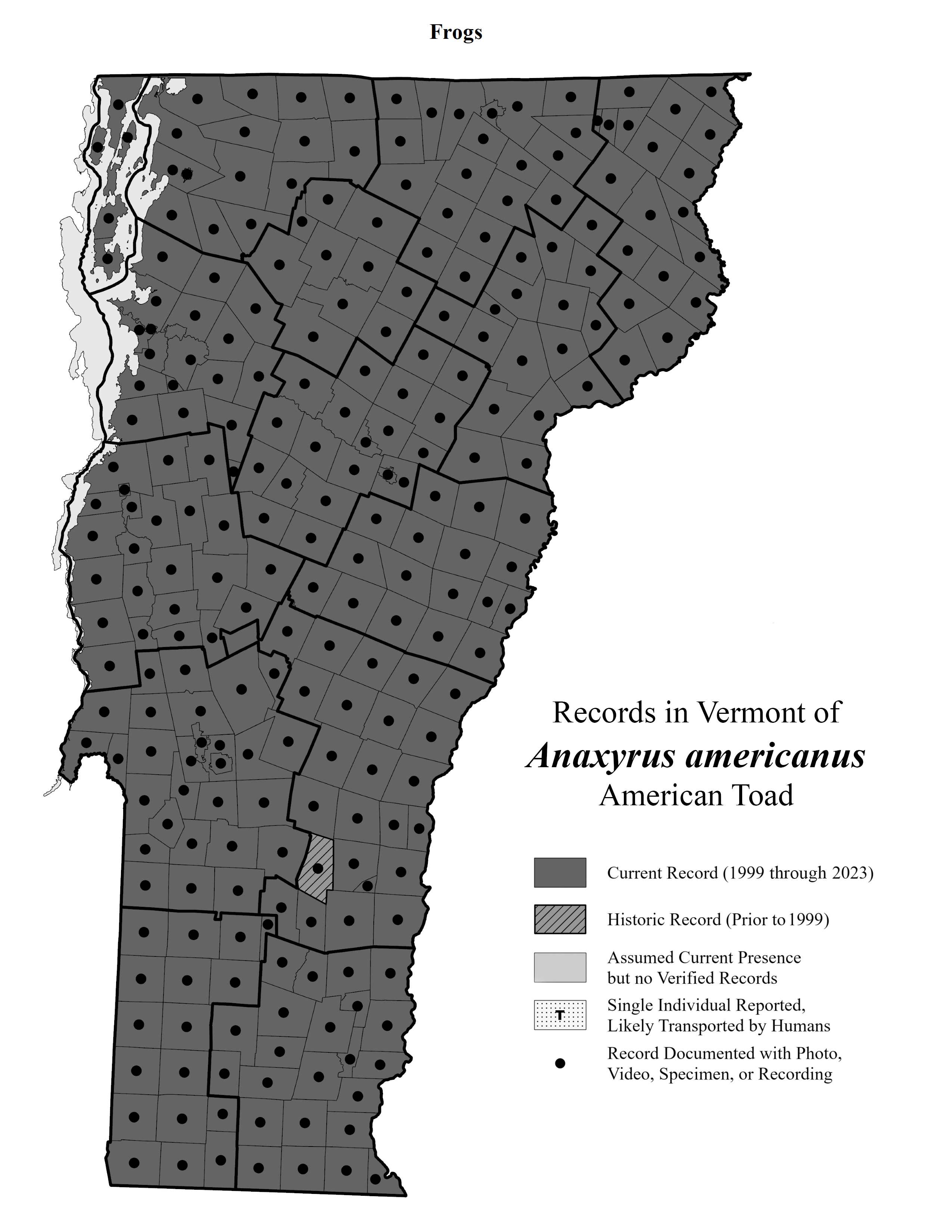
Bufonidae, Anaxyrus fowleri
Fowler’s Toad
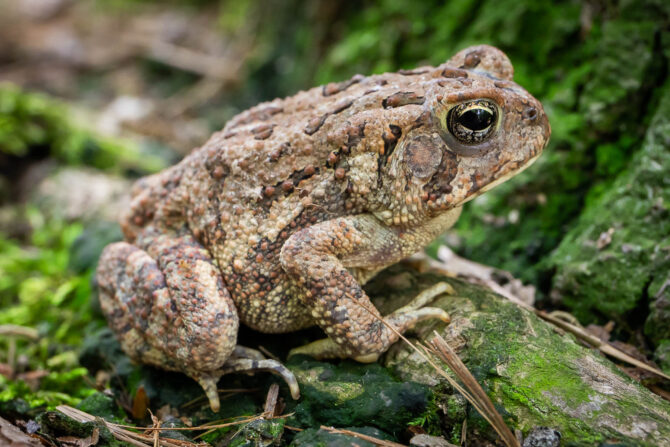
Fowler’s Toad habitat
Overwinter underground, breed in shallow water, moist hiding places, rare in VT (S1)
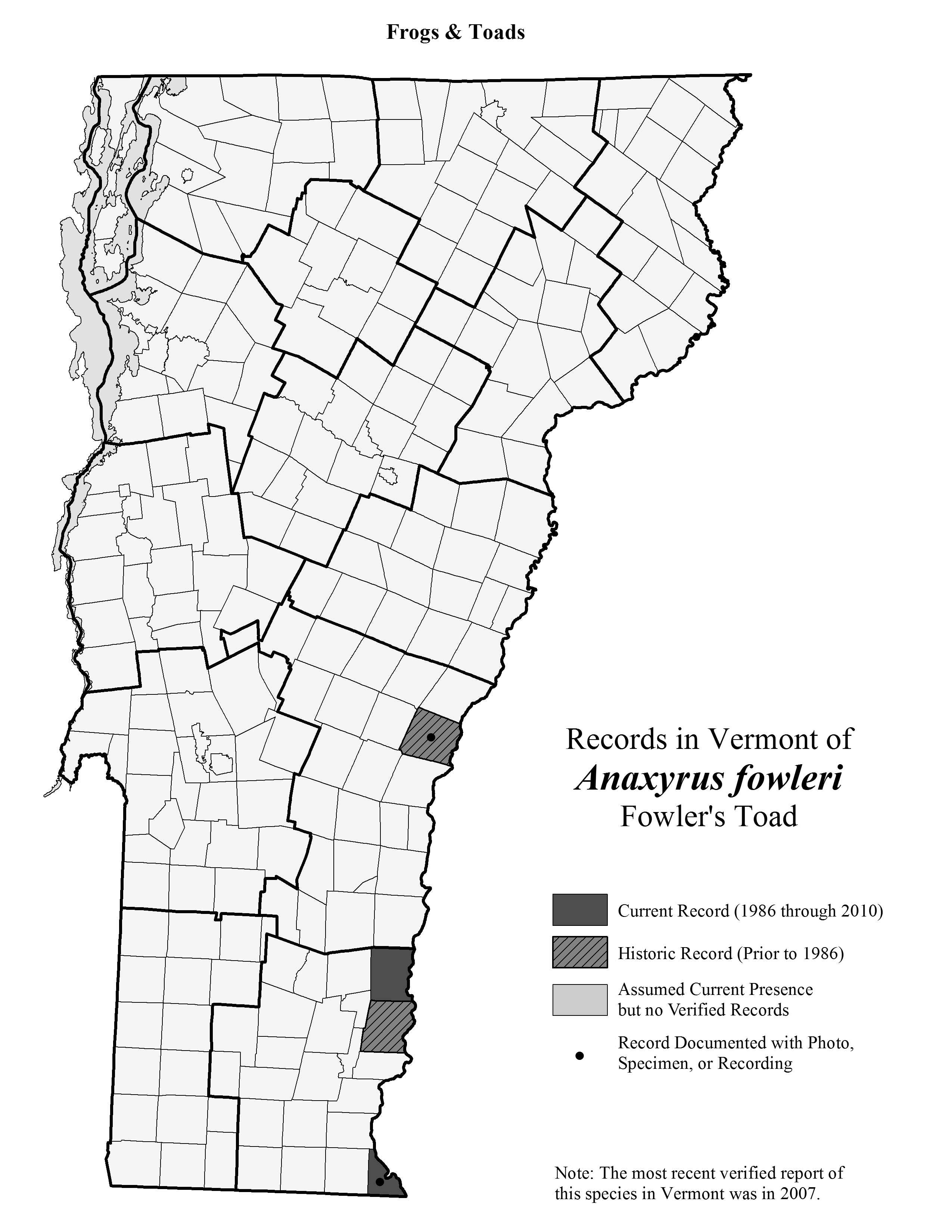
Ranidae, Lithobates catesbeianus
American Bullfrog
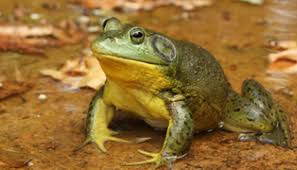
American Bullfrog habitat
Large, permanent bodies of water, emergent vegetation, lowlands, relatively common in VT (S5)
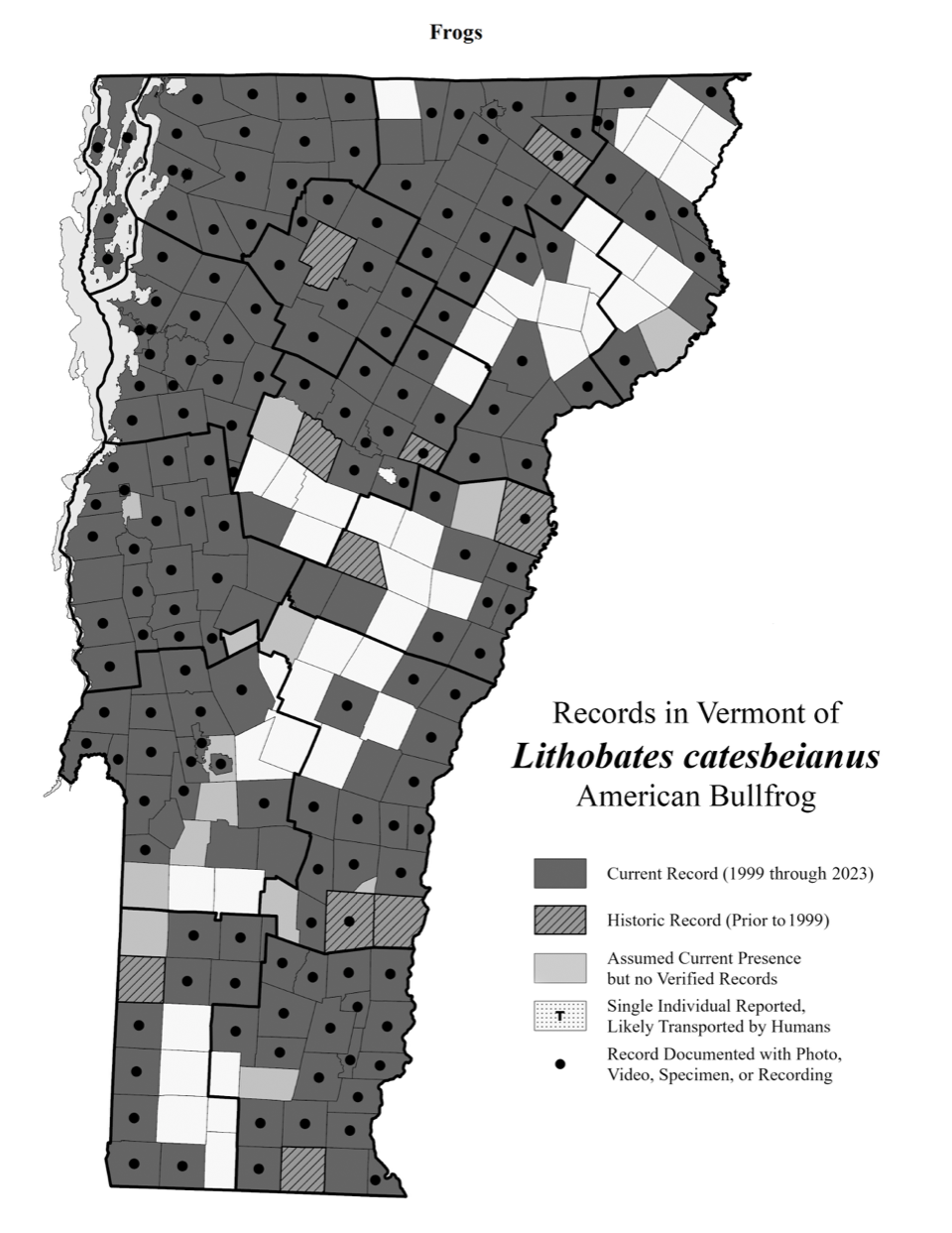
Ranidae, Lithobates clamitans
Green Frog

Green Frog habitat
Permanent water, emergent vegetation, underwater brumation, widespread in VT (S5)

Ranidae, Lithobates septentrionalis
Mink Frog
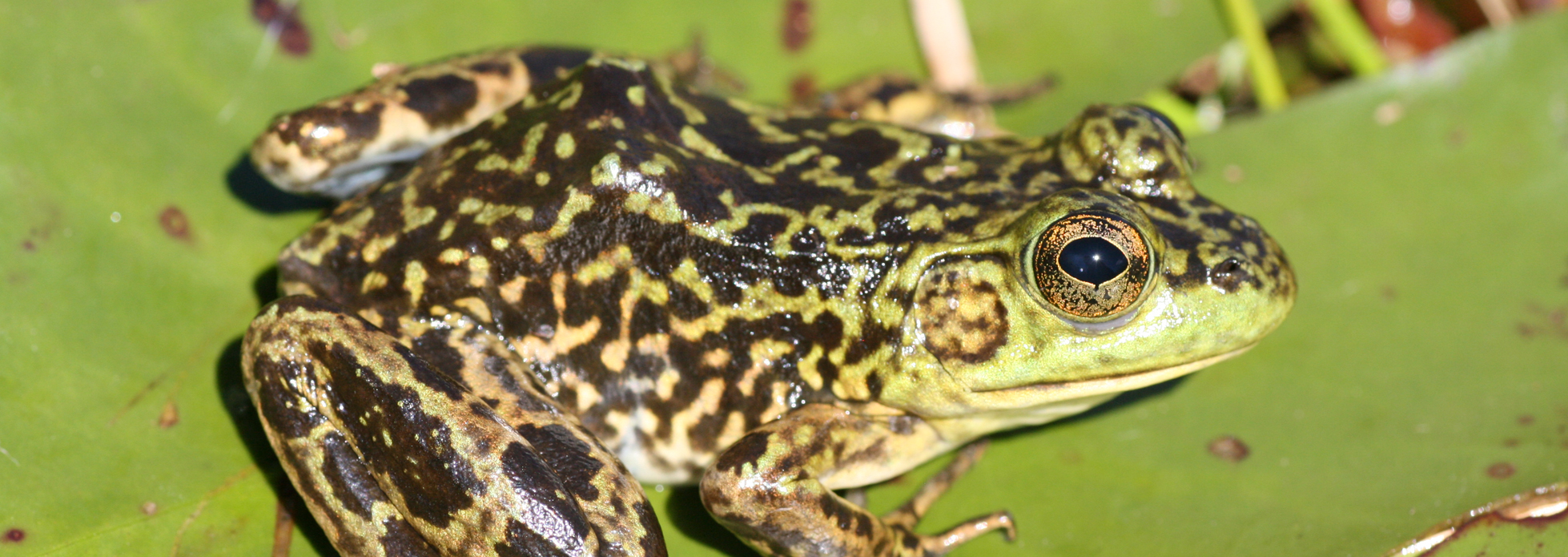
Mink Frog habitat
Still, permanent, cold bodies of water, primarily aquatic, underwater brumation, found in Northeast Kingdom (S3)
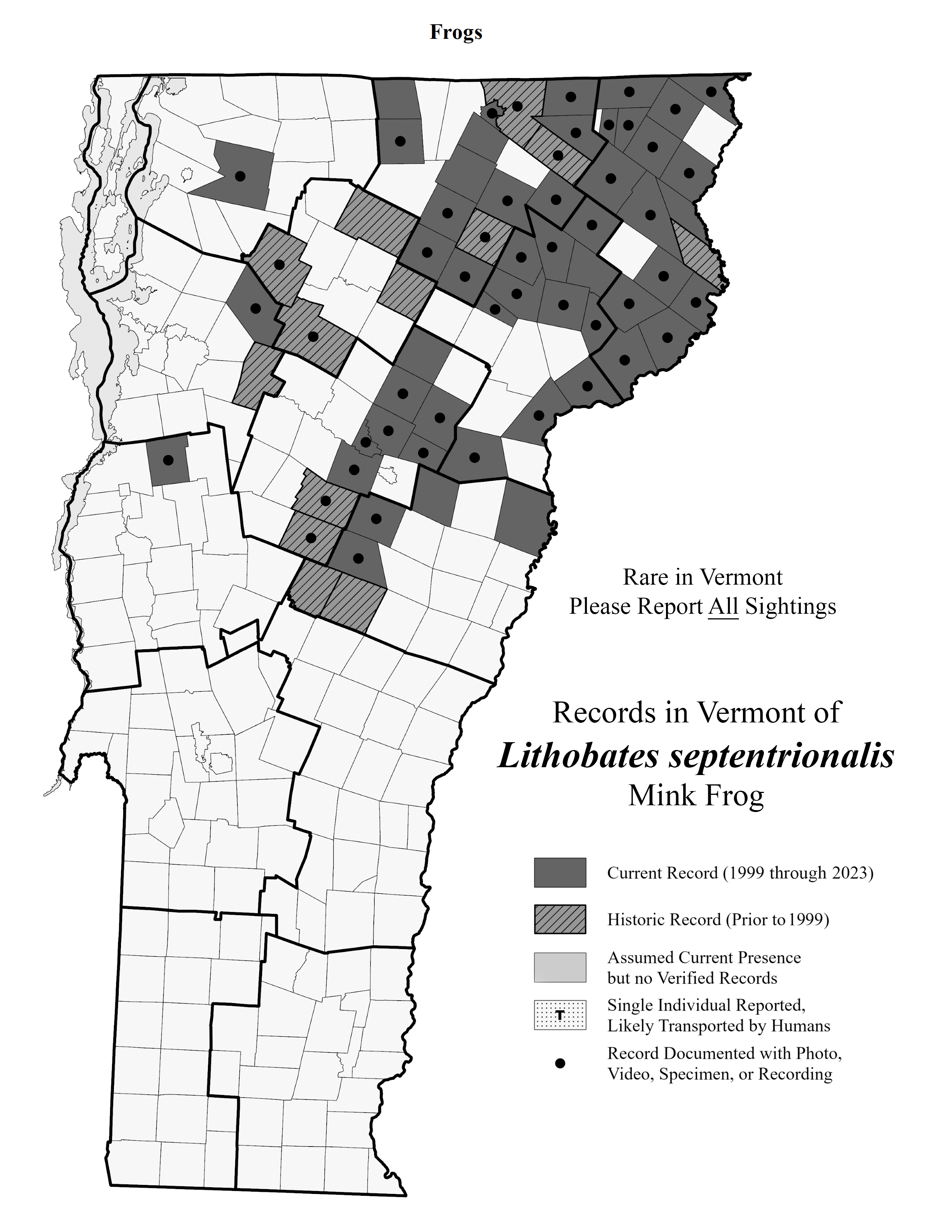
Ranidae, Lithobates pipiens
Northern Leopard Frog
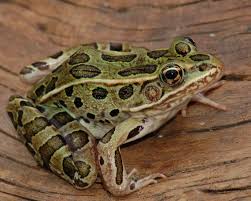
Northern Leopard Frog habitat
overwinter in permanent water, breed in floodplains and marshes, forage in wet meadows and fields, common in Champlain River Valley
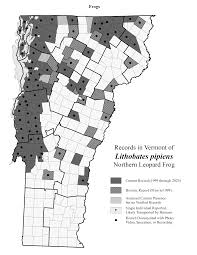
Ranidae, Lithobates palustris
Pickerel Frog
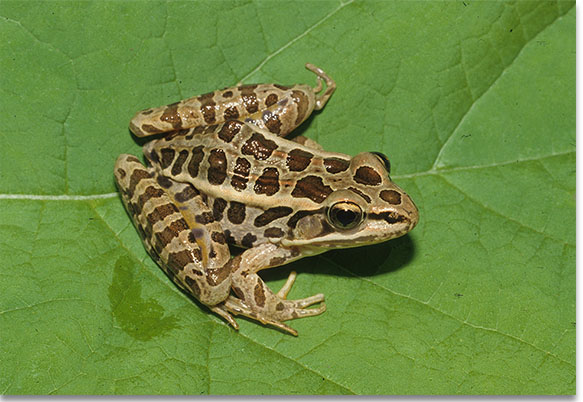
Pickerel Frog habitat
upland areas with dense vegetation, cooler temporary or permanent water, overwinter in caves, found throughout VT (S5)

Ranidae, Lithobates sylvaticus
Wood Frog
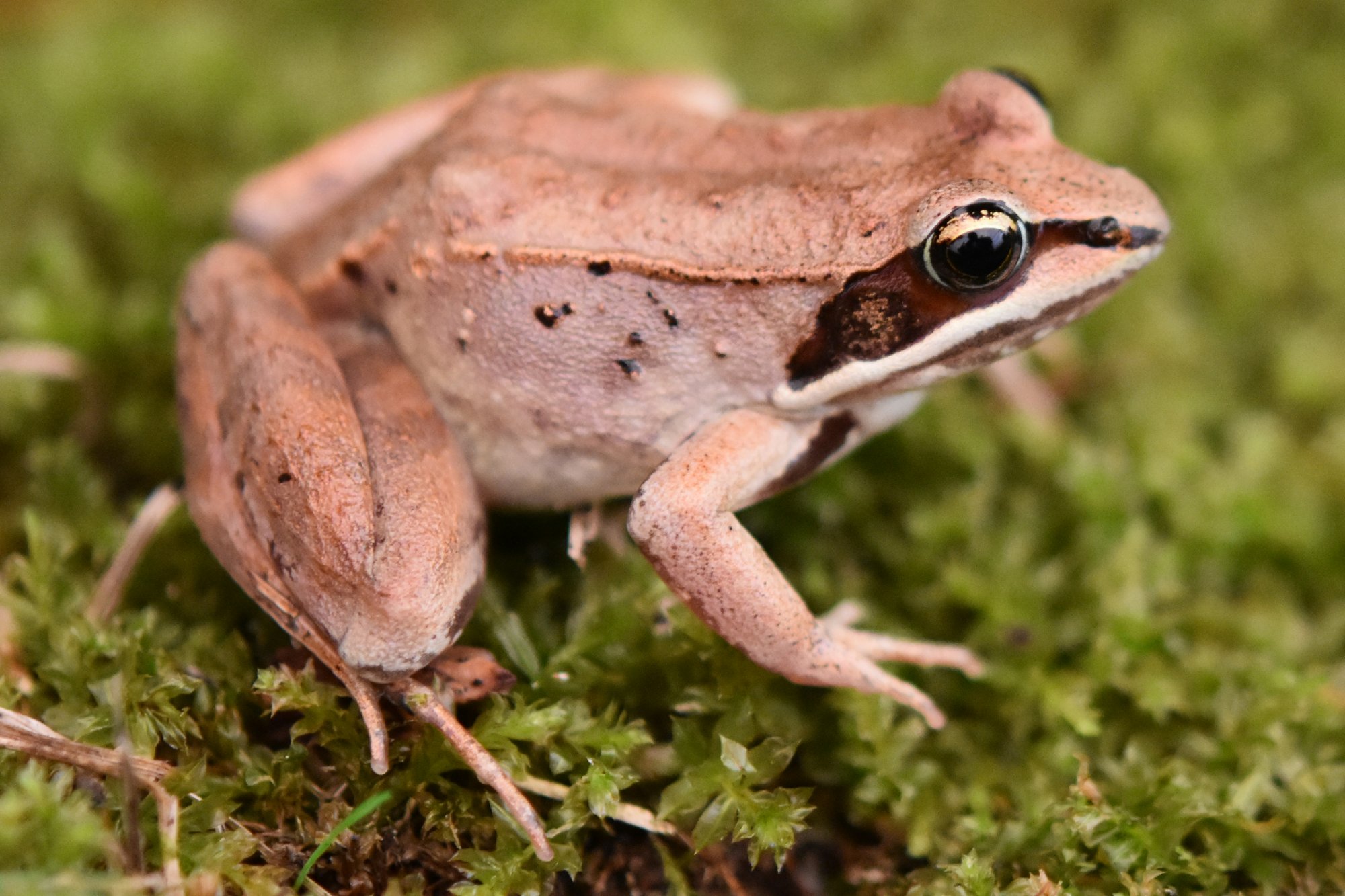
Wood Frog habitat
Boreal and temperate forests and wetlands, breed in vernal pools, frogsicle brumation, found throughout VT (S5)
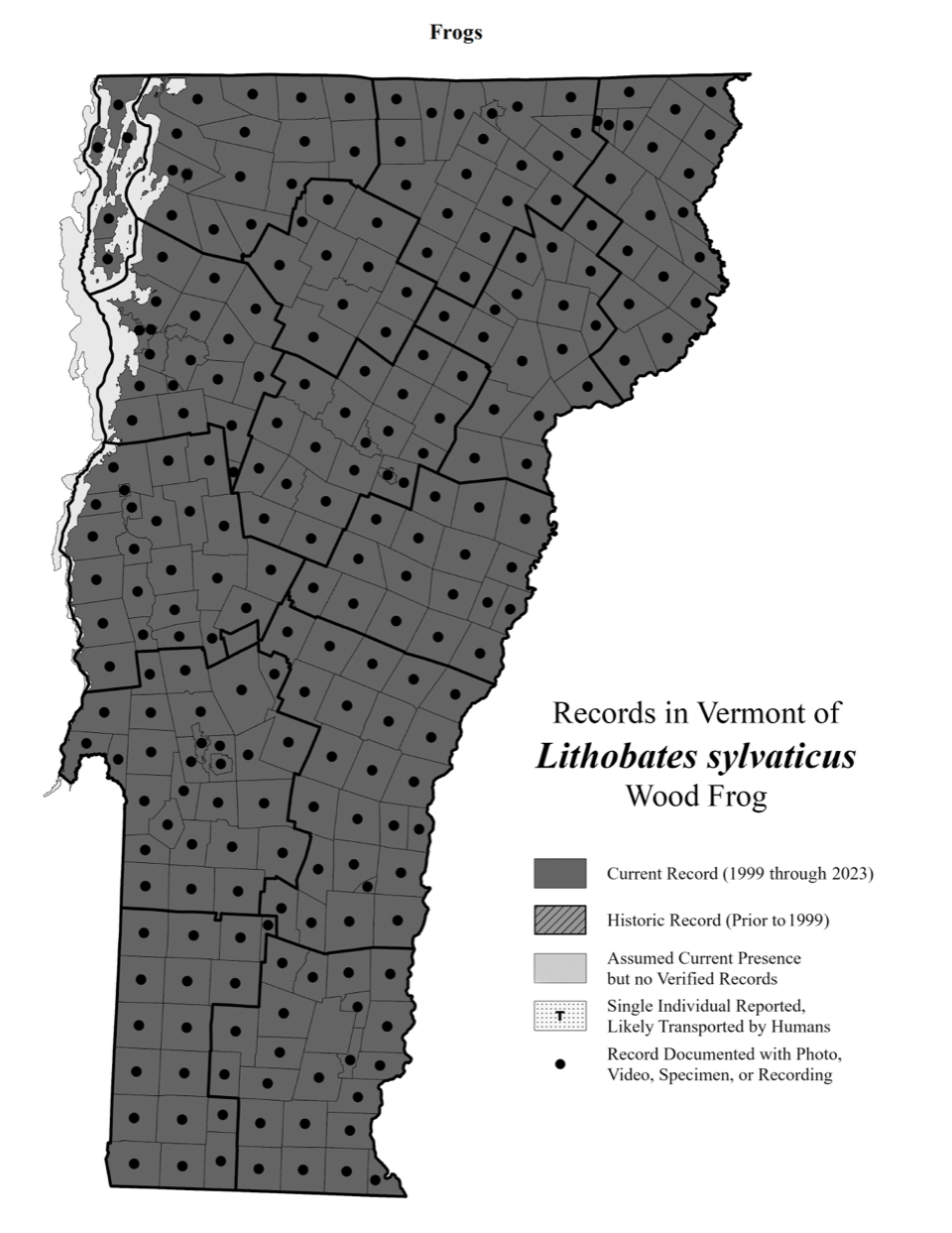
Hylidae, Hyla versicolor
Gray Treefrog

Gray Treefrog habitat
Moist deciduous woodlands, swamps, frogsicle brumation, breed in still water, found throughout VT (S5)
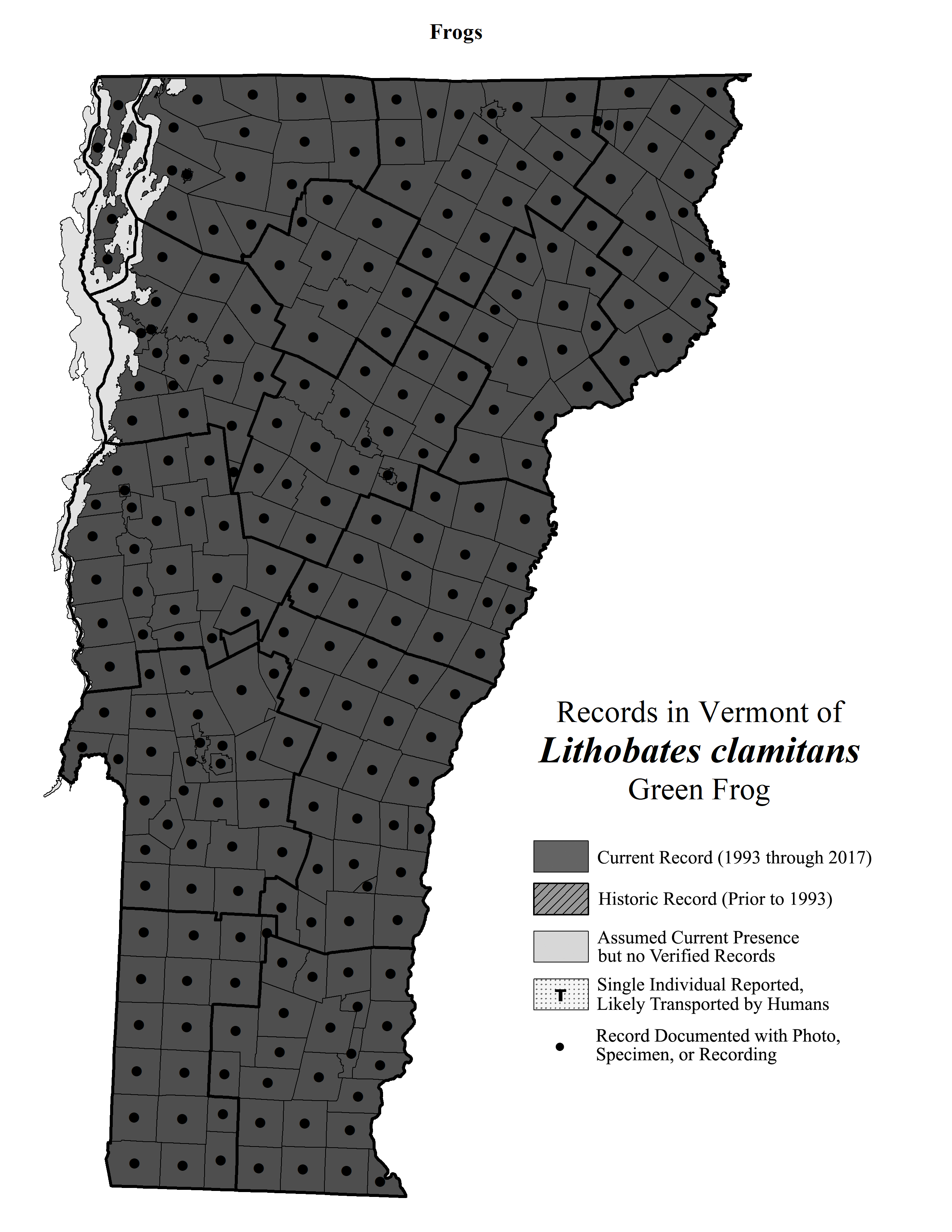
Hylidae, Pseudacris crucifer
Spring Peeper
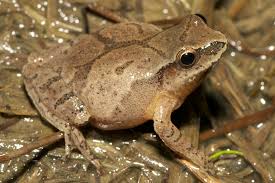
Spring Peeper habitat
Moist wooded areas, grasslands near water, breed in vernal pools, freeze-tolerant brumation, found throughout VT (S5)

Hylidae, Pseudacris maculata
Boreal Chorus Frog

Boreal Chorus Frog habitat
Wet/grassy marshes, damp forests, breed in shallow still water, frogsicle brumation, only found in Northwest corner of VT (S1)
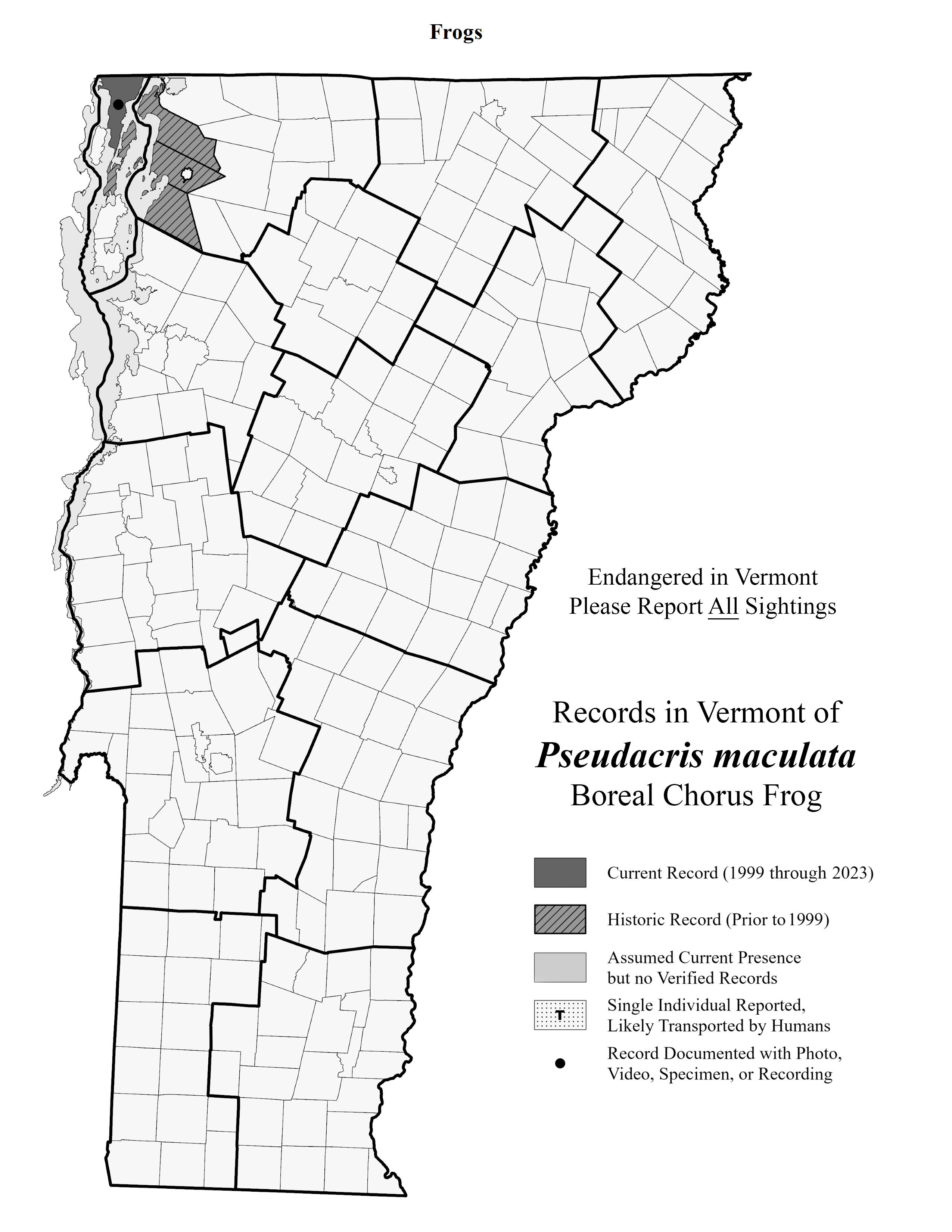
Chelydridae, Chelydra serpentina
Snapping turtle
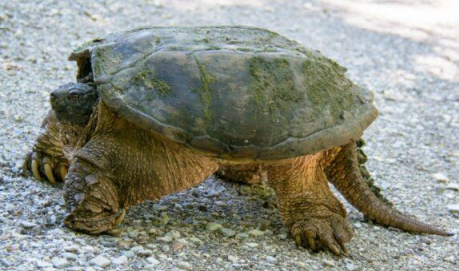
Kinosternidae, Sternotherus odoratus
Eastern musk turtle
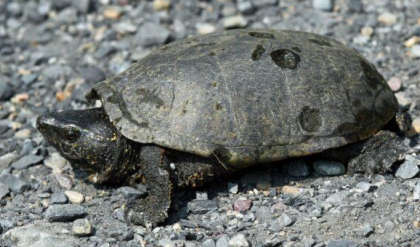
Emydidae, Graptemys geographica
Northern map turtle
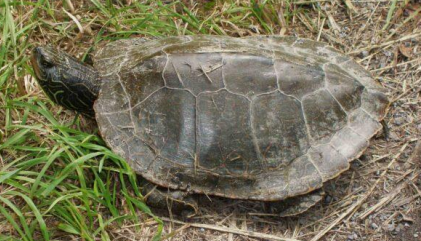
Emydidae, Clemmys guttata
Spotted turtle
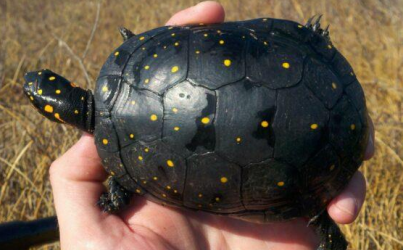
Emydidae, Glyptemys insculpta
Wood turtle

Emydidae, Chrysemys picta
Painted turtle
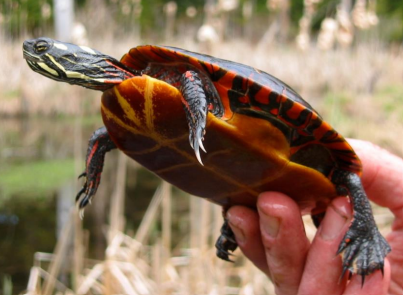
Emydidae, Trachemys scripta
Red-eared slider
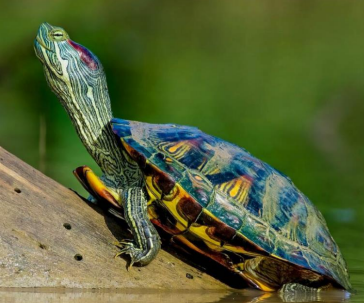
Trionychidae, Apalone spinifera
Spiny softshell
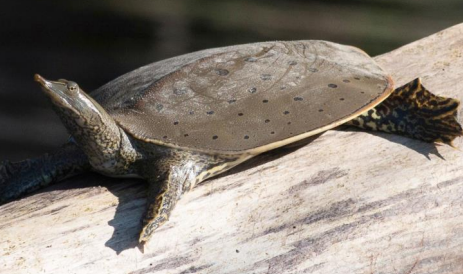
Salamandridae, Notopthalmus viridescens
Eastern Newt
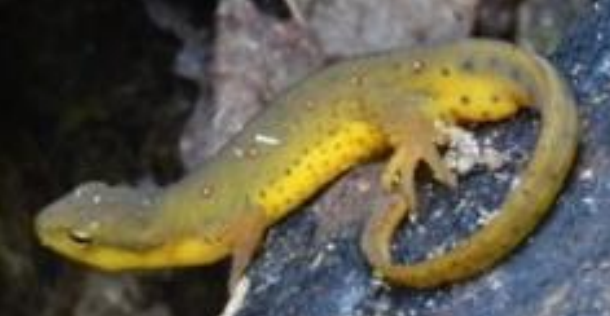
Eastern Newt life history
Red efts (juveniles) live on land for years, adults change color and return to water to breed, lay their eggs individually on underwater vegetation, aquatic or terrestrial brumation
Eastern Newt habitat
Hardwood forests near permanent water, breed in beaver ponds, marshes, lakes, etc., common throughout VT except NE Kingdom (S5)
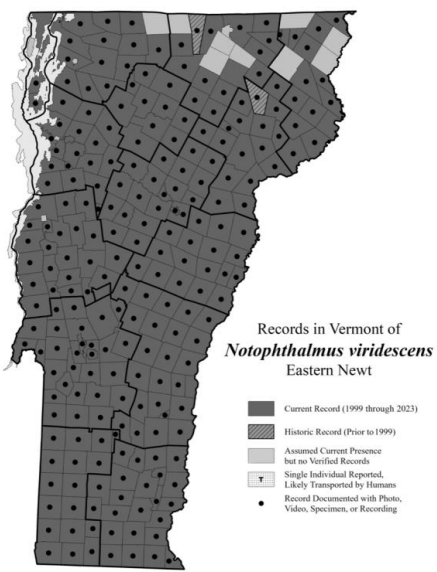
Ambystomatidae, Ambystoma jeffersonianum
Jefferson Salamander

Jefferson Salamander life history
Spends most of its life underground, hybridizes with blue-spotted (the Jeff complex), lays loose masses of 10-40 eggs
Jefferson Salamander habitat
Summer and overwinter in upland forests, breed in vernal pools, sensitive to acidity in breeding pools (S2)

Ambystomidae, Ambystoma laterale
Blue-spotted Salamander
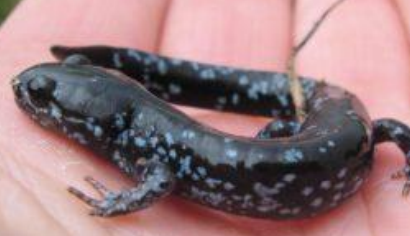
Blue-spotted salamander life history
Spends most of its life underground, lays single gelatinous eggs, hybridizes with Jefferson Salamanders (the Jeff complex)
Blue-spotted Salamander habitat
Lower elevation vernal pools, flood plains, marshes, and swamps, scattered populations throughout VT (S3)
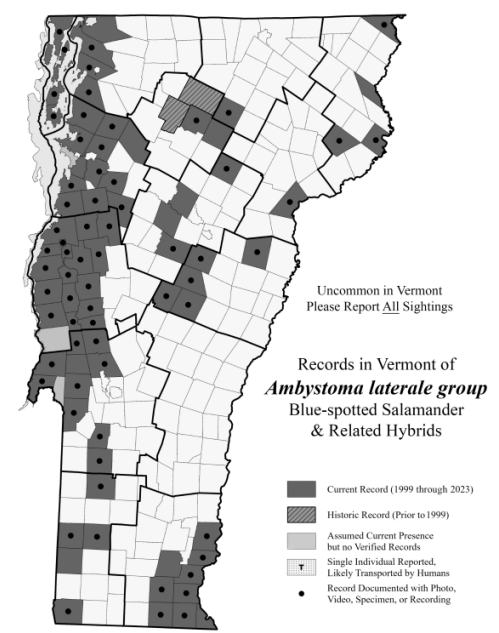
Ambystomidae, Ambystoma maculatum
Spotted salamander
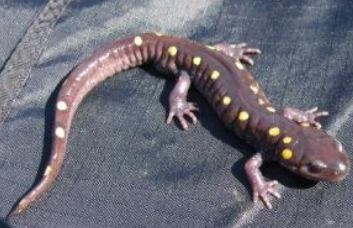
Spotted Salamander life history
Spends most of its life underground, lays egg masses of 20-250, can live for 20 years
Spotted Salamander habitat
Summer and overwinter in upland hardwood and mixed forests, breed in vernal pools (S5)
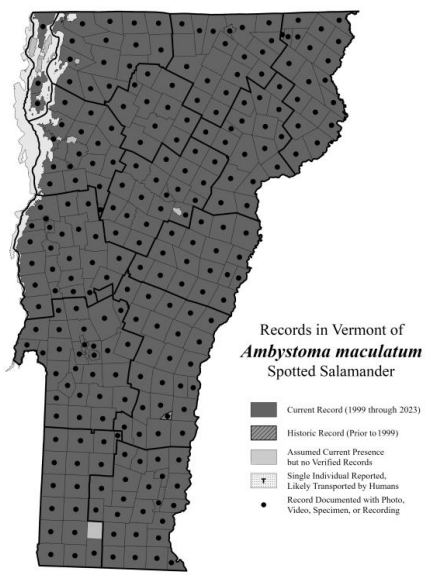
Plethodontidae, Plethodon cinereus
Eastern Redbacked Salamander
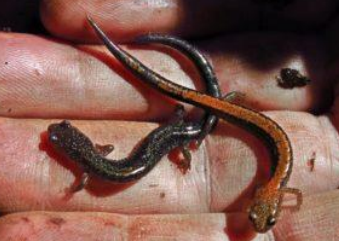
Eastern Redbacked Salamander life history
Entirely terrestrial, direct development, lays eggs under logs and guards nest
Eastern Redbacked Salamander habitat
Hardwood and mixed wood forests, deep leaf litter, not found in acidic soils (coniferous woods) (S5)

Plethodontidae, Hemidactylium scutatum
Four-toed Salamander
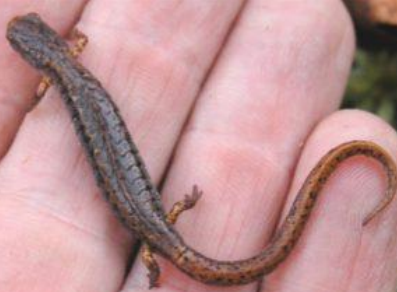
Four-toed Salamander life history
Lays 15-60 eggs in moss or debris near water, sometimes communal nests, rapid larval development, overwinters underground sometimes in mixed species groups
Four-toed Salamander habitat
Moist and dry woodlands, forests adjacent to swamps (S2)
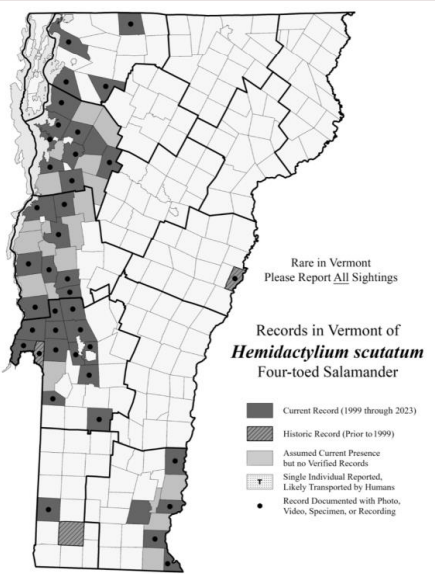
Plethodontidae, Eurycea bislineata
Northern Two-lined Salamander

Northern Two-lined Salamander life history
Lays masses of 10s of eggs on underside of river rocks, communal nesting, long larval stage, overwinters in running water or in terrestrial habitat
Northern Two-lined Salamander habitat
Stream-associated, found in wet soil or under cover in and around strems (S5)
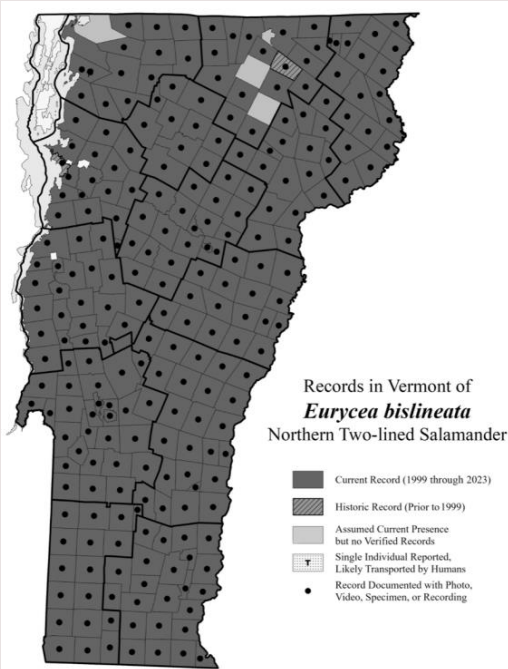
Plethodontidae, Desmognathus fuscus
Northern Dusky Salamander
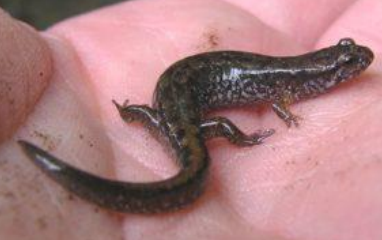
Northern Dusky Salamander life history
Egg mass of 40 eggs is laid in moist mosses and is guarded by female, long larval period, overwinters in streams or deep soil
Northern Dusky Salamander habitat
Stream-associated, rocks, logs, and debris for shelter, may share habitat with Northern two-lined and spring salamanders (S5)
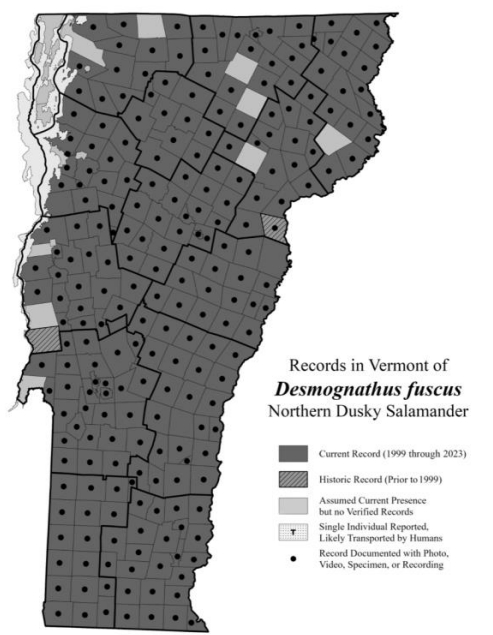
Plethodontidae, Gyrinophilus porphyriticus
Spring Salamander

Spring Salamander life history
One egg mass of up to 130 eggs is laid on the underside of rocks in streams, long larval period, overwinters in streams but may be active year-round
Spring Salamander habitat
Well-oxygenated, cold, clear mountain streams or springs, will feed on land near streams at night (S4)
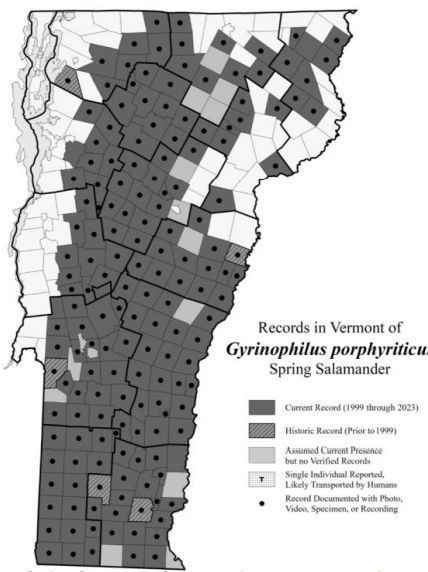
Proteidae, Necturus maculosus
Mudpuppy
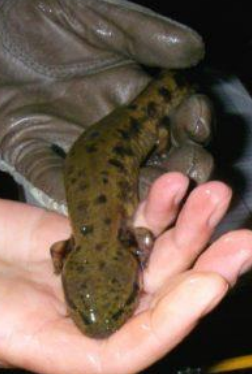
Mudpuppy life history
50-100 eggs laid under rocks, logs, etc. and guarded by female, larval characteristics persist for life, active year-round
Mudpuppy habitat
Spend most of their time at depths of up to 60 feet, may move upstream or to shorelines to lay their eggs (S2)
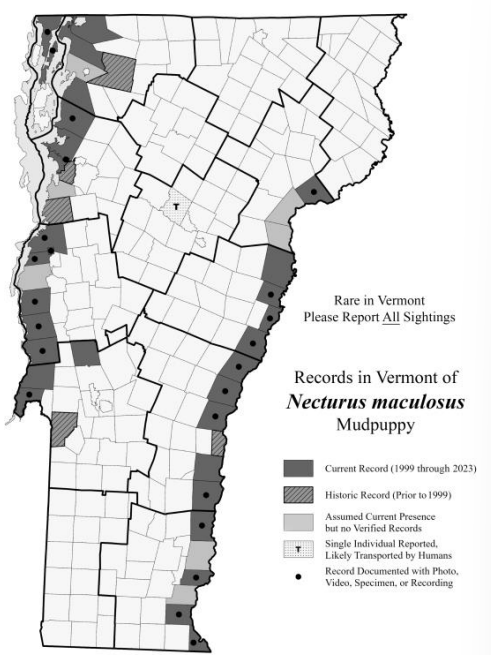
Snapping turtle life history
TSD, females lay 20-80 round eggs on land, very defensive when on land
Eastern musk turtle life history
TSD, 1-9 oval eggs laid close to water’s edge, almost entirely aquatic
Northern map turtle life history
TSD, 8-19 oval eggs laid on shoreline, bask in large groups but almost entirely aquatic
Spotted turtle life history
TSD, 3-7 eggs laid in open areas, prefers shallow marshes and wetlands
Wood turtle life history
GSD, 3-20 eggs laid in gravel bars near water or in grasslands or sandy shores, exhibit worm stomping behavior
Painted turtle life history
TSD, 3-14 eggs laid in nests near water, often found in ponds and slow-moving streams, loves to bask
Red-eared slider life history
TSD, 3-20 eggs laid in sandy or soft soil near water, commonly found in ponds, lakes, and rivers, known for their aquatic habits and basking behavior
Spiny softshell life history
GSD, 4-32 spherical eggs laid in full sun on shorelines, super speedy in water, buries in sand with tube nose sticking out for breathing
Snapping turtle habitat
Still, slow-moving bodies of water with soft bottoms, enjoys emergent vegetation (S5)
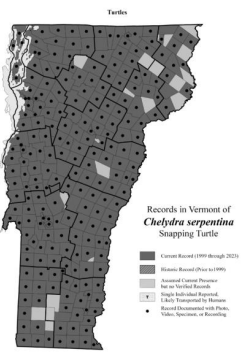
Eastern musk turtle habitat
Shallow, weedy, still water, limited to scattered locations in Champlain Basin (S2)
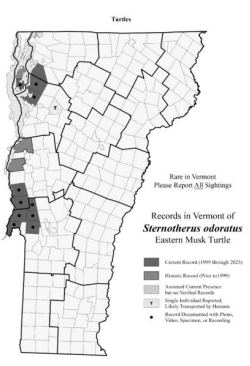
Northern map turtle habitat
Mostly found in Lake Champlain and major tributaries, VT is the only New England state to have them (S3)
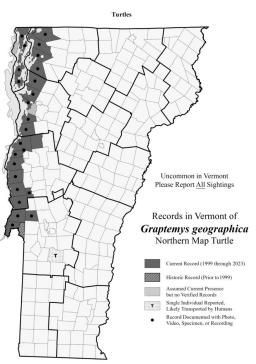
Spotted turtle habitat
Enjoys shallow water, emergent vegetation, occupies many different wetland types — only documented in three VT counties (S1)
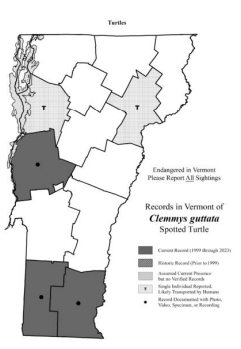
Wood turtle habitat
Inhabits streams and rivers, feeding on land and forest nearby, overwinter in water, widespread in VT but not common in any one place (S3)

Painted turtle habitat
Aquatic turtle, likes to bask on rocks and logs, found in soft-bottomed ponds and lakes with emergent vegetation (S5)
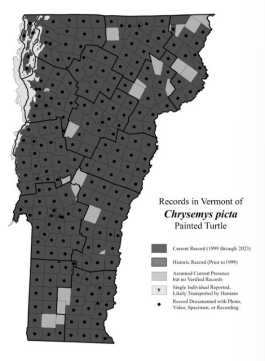
Red-eared slider habitat
Still, warm, shallow waters with soft bottom and emergent vegetation
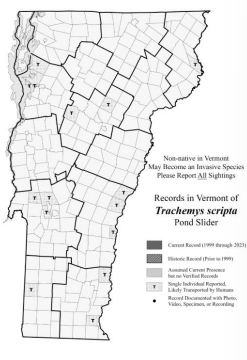
Spiny softshell turtle habitat
Entirely aquatic, only found in the northeast corner of Lake Champlain (S1)

Scincidae, Plestiodon fasciatus
Common five-lined skink

Common five-lined skink habitat
Oviparous, nest in logs or abandoned burrows, females guard nest until hatching, only found in western Rutland county (S1)
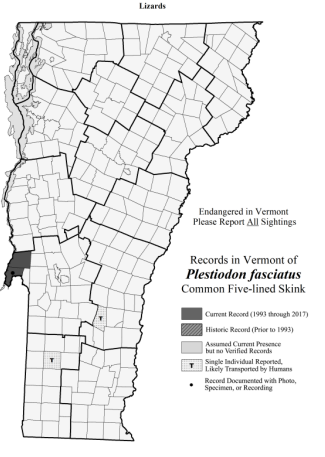
Colubridae, Thamnophis sirtalis
Common gartersnake

Common gartersnake habitat
Viviparous, communal mating, often found in wetlands, grasslands, and forests — likes sun for basking (S5)
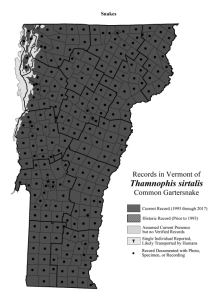
Colubridae, Thamnophis saurita
Eastern ribbonsnake
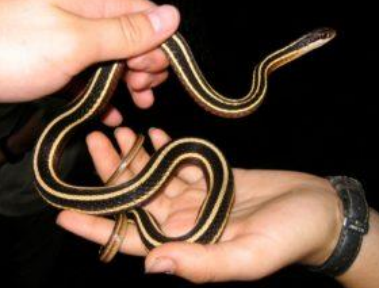
Eastern ribbonsnake habitat
Viviparous, found in pastures, open fields, open woods, always near water (semi-aquatic) (S2)
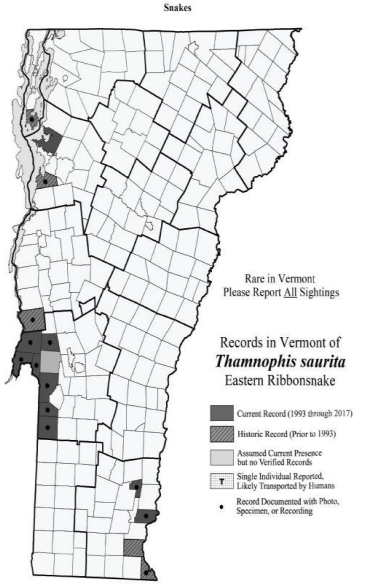
Colubridae, Diadophis punctatus
Ring-necked snake
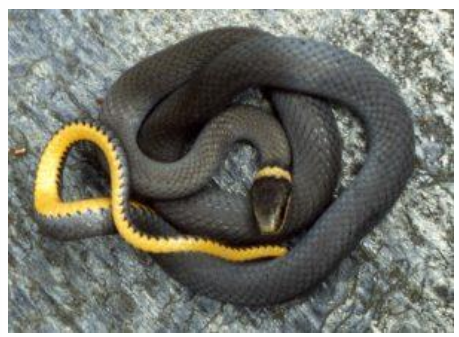
Ring-necked snake habitat
Oviparous, possibly nocturnal/crepuscular, found in warm, exposed areas with lots of natural cover (S4)
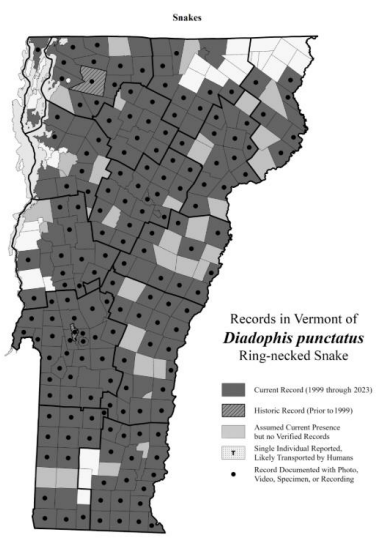
Colubridae, Storeria dekayi
DeKay’s brownsnake
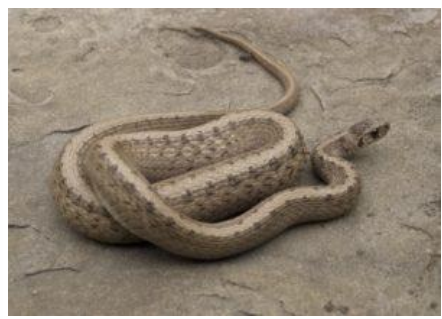
DeKay’s brownsnake habitat
Viviparous, possibly noctural/crepuscular, spend most of their time underground, found in overgrown, wet meadows and rocky woods (S4)
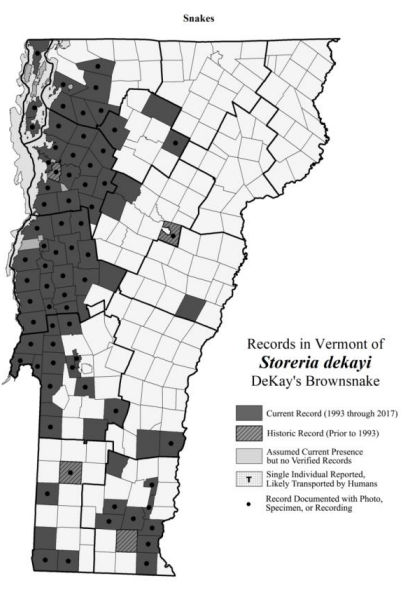
Colubridae, Storeria occipitomaculata
Red-bellied snake

Red-bellied snake habitat
Viviparous, possibly nocturnal/crepuscular, found in woodlands with sunny openings and abundant cover (S5)
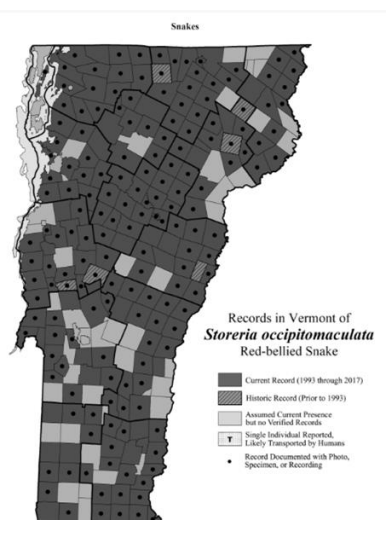
Colubridae, Opheodrys vernalis
Smooth greensnake
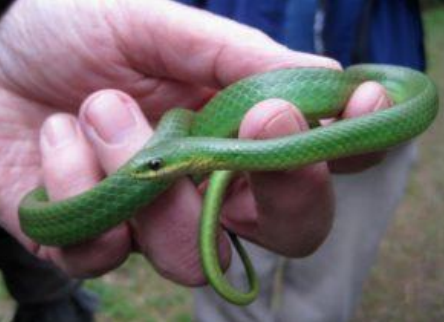
Smooth greensnake habitat
Oviparous, TSD, found in beaver meadows, fields, and pastures (S3)
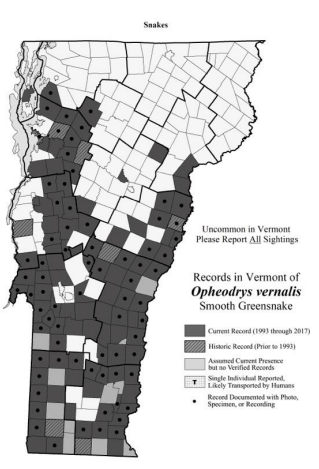
Colubridae, Lampropeltis triangulum
Eastern milksnake
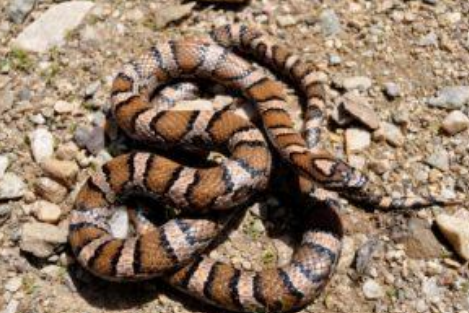
Eastern milksnake habitat
Oviparous, communal brumation, found in old fields, stone walls, buildings, ledges, etc. (S5)
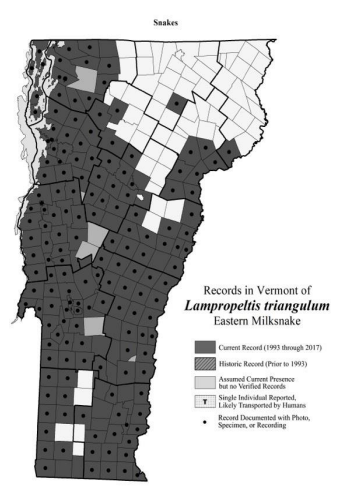
Colubridae, Nerodia sipedon
Common watersnake
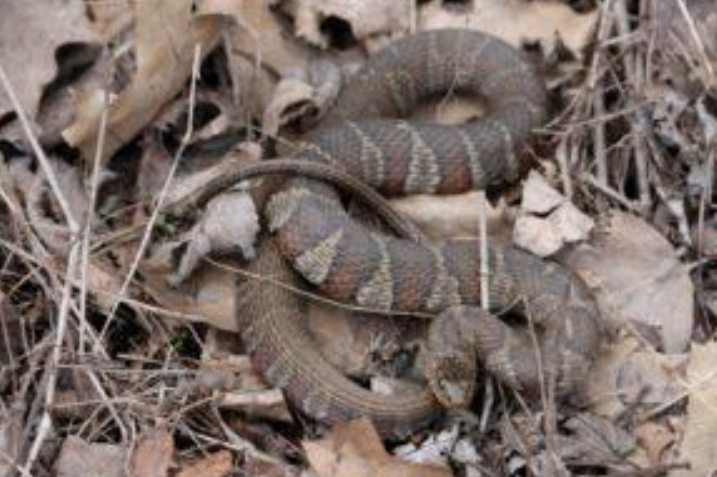
Common watersnake habitat
Viviparous, excellent swimmers, found in lowland wetlands with vegetation and rocks (S3)

Colubridae, Pantherophis alleghaniensis
Eastern ratsnake
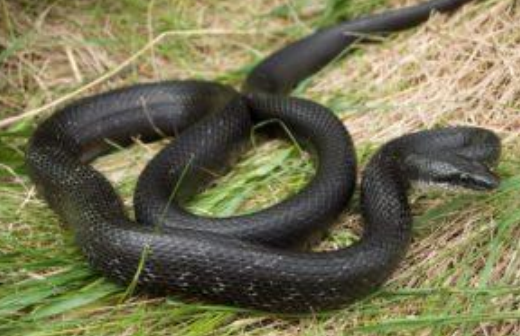
Eastern ratsnake habitat
Oviparous, communal brumation, avid climbers, found in and around old buildings, barns, and old fields, ideally near rocky areas and ledges (S2)
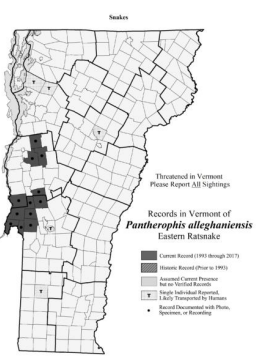
Colubridae, Coluber constrictor
North American racer
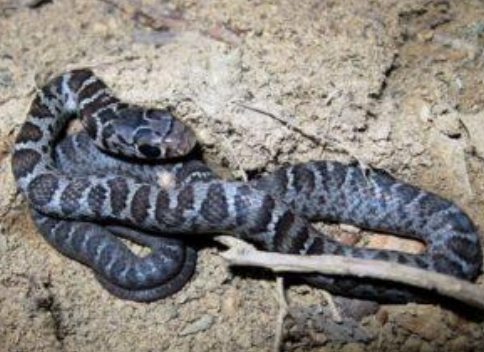
North American racer habitat
Oviparous, found in open pastures, power line trails, in meadows, and near rocky ridges (S1)
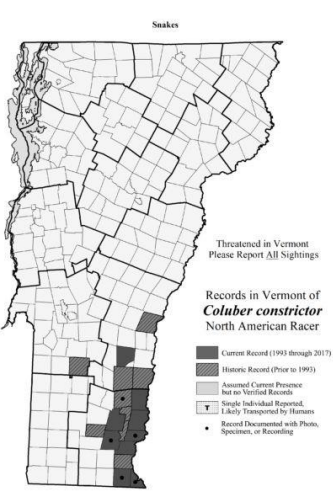
Viperidae, Crotalus horridus
Timber rattlesnake

Timber rattlesnake habitat
Viviparous, only breeds every 3-6 years, found in western Rutland county only (S1)
